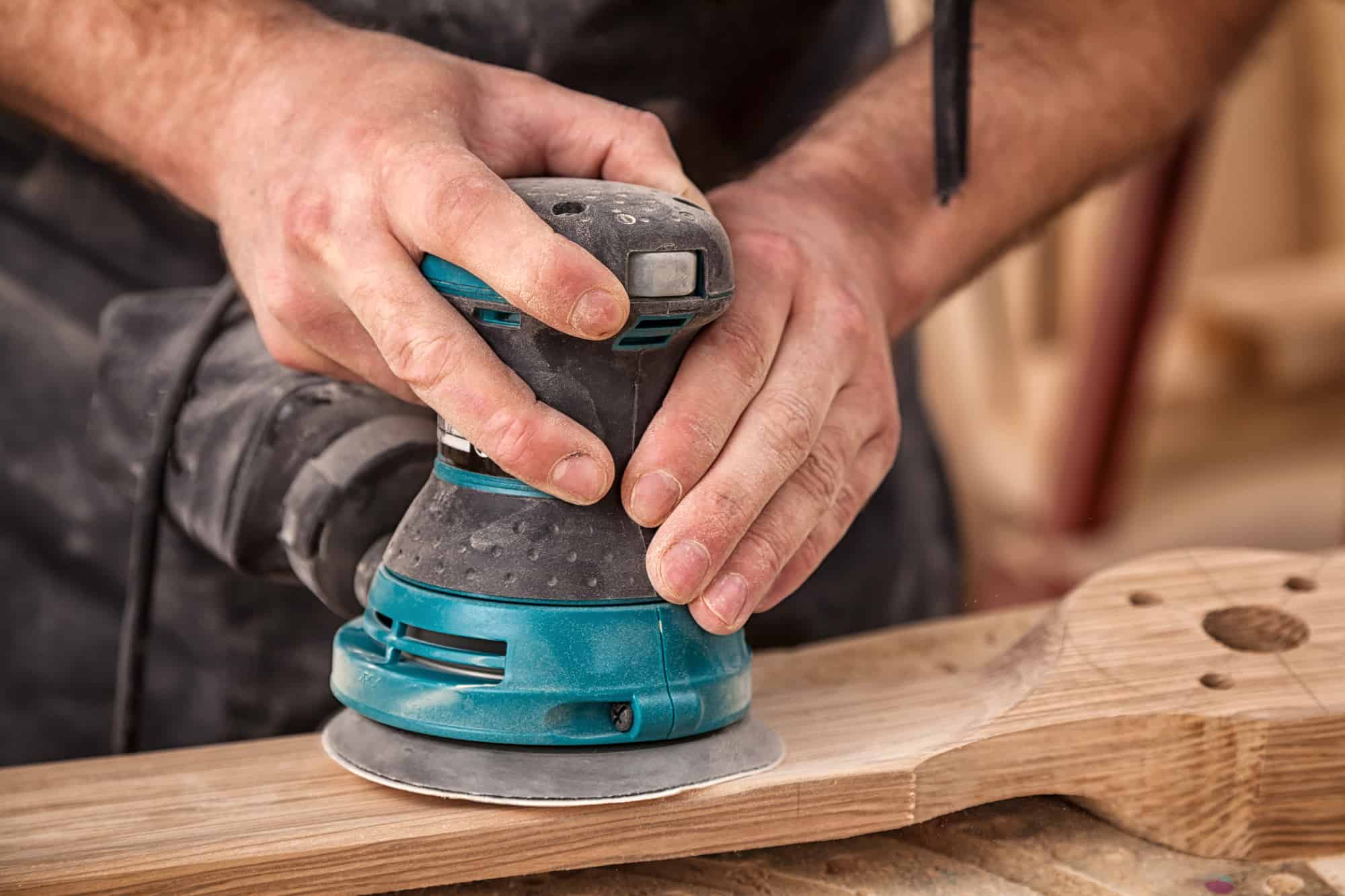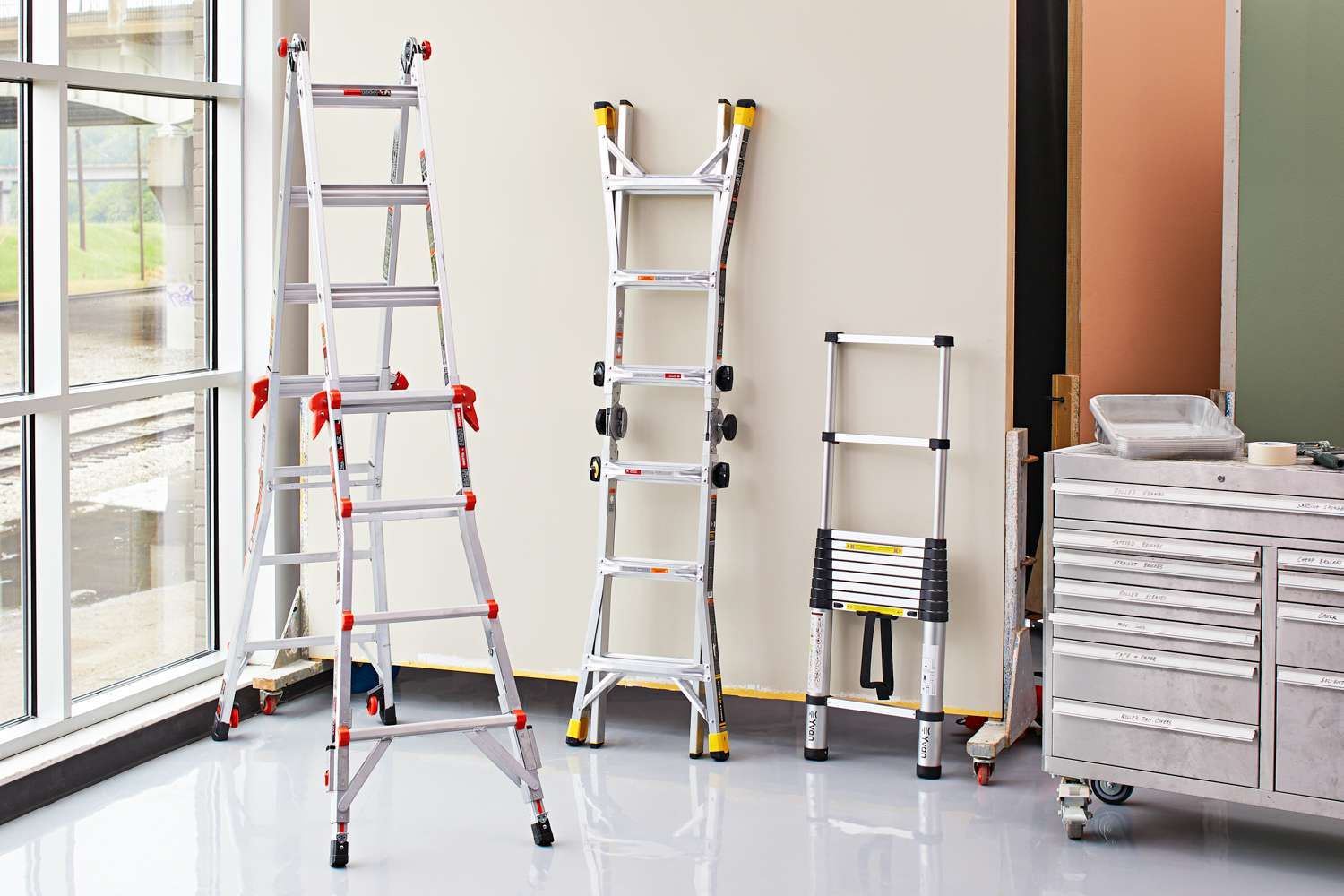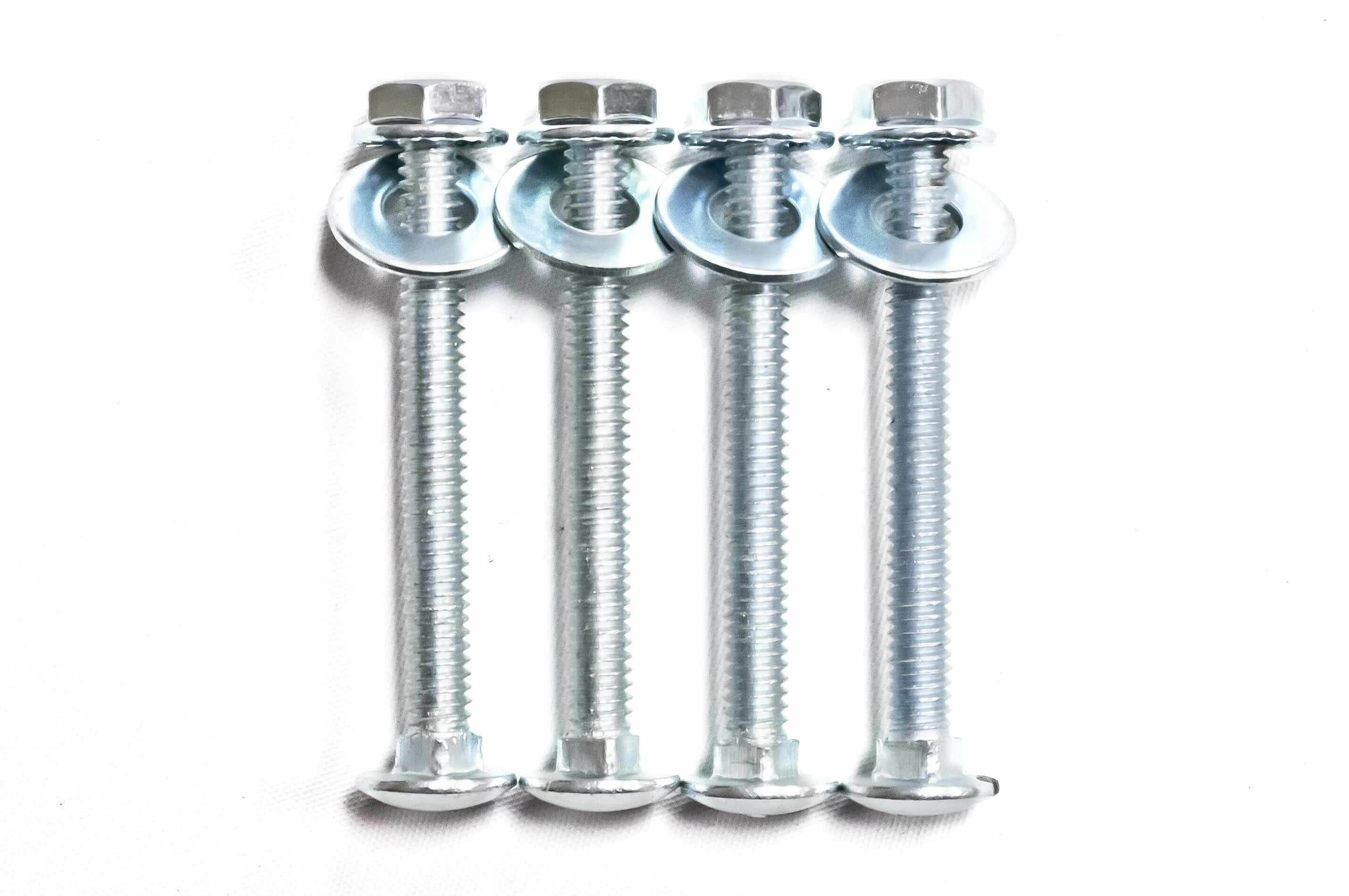Home>Articles>How To Choose The Right Sander For Your Project


Articles
How To Choose The Right Sander For Your Project
Modified: August 30, 2024
Need help choosing the right sander for your project? Check out our informative articles for expert tips and recommendations to make your decision easier.
(Many of the links in this article redirect to a specific reviewed product. Your purchase of these products through affiliate links helps to generate commission for Storables.com, at no extra cost. Learn more)
Introduction
Choosing the right sander for your project is crucial to achieving a smooth and professional finish. Whether you’re working on woodworking, metalworking, or DIY home projects, having the appropriate sander can make a world of difference in the outcome of your work. With a wide variety of sanders available on the market, it can be daunting to determine which one is best suited to your specific needs.
In this article, we will explore the essential factors to consider when choosing a sander, the different types of sanders available, and how to select the right one for woodworking, metalworking, and DIY home projects.
Key Takeaways:
- Choose the right sander by considering project type, surface area, sanding speed, dust collection, power source, ergonomics, and budget. Each type of sander offers unique advantages for woodworking, metalworking, and DIY home projects.
- Belt sanders are ideal for heavy material removal, orbital sanders provide a smooth finish, random orbital sanders offer versatility, detail sanders excel at intricate work, and sheet sanders are perfect for achieving a polished finish. Always prioritize safety and proper sanding techniques for optimal results.
Factors to Consider When Choosing a Sander
Before diving into the different types of sanders, it’s important to understand the key factors to consider when making your selection. By taking these factors into account, you can ensure that the sander you choose will efficiently and effectively fulfill your project requirements.
1. Project Type: Consider the nature of your project. Are you working with wood, metal, or doing a DIY home improvement task? Different materials may require specific types of sanders that are better suited to their properties.
2. Surface Area: Evaluate the size and shape of the surface you need to sand. Some sanders are better suited for large, flat surfaces, while others excel at reaching corners and tight spaces.
3. Sanding Speed: Determine the desired speed at which you want to work. Some sanders have variable speed settings, allowing you to adjust the speed to suit your needs.
4. Dust Collection: Consider the dust collection capabilities of the sander. Dust can be a major inconvenience and hazard, so having a sander with effective dust collection features can greatly improve your working environment.
5. Power Source: Decide whether you prefer a corded or cordless sander. Corded sanders provide consistent power, while cordless sanders offer more flexibility in terms of mobility.
6. Ergonomics: Take into account the comfort and ease of use of the sander. Look for features such as rubberized grips and adjustable handles that can reduce fatigue and improve control during prolonged use.
7. Budget: Set a budget for your sander purchase. Determine the range of features you need and find a sander that offers the best value for your money.
Taking these factors into consideration will help you narrow down your options and select a sander that best fits your project requirements. Now that we have examined the factors to consider, let’s explore the different types of sanders available in the market.
Types of Sanders
There are several types of sanders available, each designed for specific applications and surfaces. Understanding the different types will help you make an informed decision when choosing the right sander for your project. Let’s explore some of the most common types:
1. Belt Sanders: Belt sanders are powerful tools that use a continuous loop of sanding belt to remove material quickly. They are ideal for large woodworking projects and for leveling surfaces.
2. Orbital Sanders: Orbital sanders, also known as quarter-sheet sanders, use a rectangular sanding pad that moves in small orbits. They are great for fine sanding and smoothing surfaces without leaving swirl marks.
3. Random Orbital Sanders: Random orbital sanders combine the motion of an orbital sander with a random pattern, minimizing the chance of creating visible scratch patterns. They are versatile and suitable for both rough and fine sanding tasks.
4. Detail Sanders: Detail sanders, also called corner sanders or mouse sanders, are compact sanding tools that excel at reaching tight spaces and corners. They are perfect for intricate woodworking tasks and refinishing furniture.
5. Disc Sanders: Disc sanders feature a rotating sanding disc that works on both wood and metal surfaces. They are powerful tools used for heavy material removal and shaping.
6. Sheet Sanders: Sheet sanders, also known as finishing sanders, use rectangular sheets of sandpaper. They are great for achieving a smooth finish on large, flat surfaces and for final touch-ups.
These are just a few examples of the many types of sanders available. Each sander has its own advantages and is suitable for different applications. It’s important to match the type of sander to the requirements of your project to ensure optimal results. In the next sections, we’ll delve into specific considerations for choosing the right sander for woodworking, metalworking, and DIY home projects.
Belt Sanders
Belt sanders are powerful tools that use a continuous loop of sanding belt to remove material quickly. They are commonly used in woodworking projects where heavy material removal or leveling is required. Belt sanders consist of a motor that drives the sanding belt in a linear motion, allowing for efficient material removal.
One of the key advantages of belt sanders is their ability to remove material at a high rate, making them ideal for tasks such as leveling uneven surfaces or removing paint, varnish, or old finishes. They can easily handle large workpieces and are often used for sanding floors, decks, and tabletops.
Belt sanders are available in different sizes, with wider belts providing a larger sanding area and faster material removal. However, it’s worth noting that belt sanders can be quite aggressive, and caution must be exercised to avoid removing too much material or damaging the surface.
When using a belt sander, it’s important to keep the tool moving smoothly and evenly across the surface to prevent uneven sanding marks. It’s recommended to start with a coarser grit sandpaper to remove the bulk of material and then progress to finer grits for a smoother finish.
Some belt sanders come with adjustable speed settings, allowing you to control the aggressiveness of the sanding action. This feature proves beneficial when working with different materials or when performing more delicate sanding tasks.
While belt sanders excel at rapid material removal, they may not be the best choice for fine woodworking or achieving a perfectly smooth finish. In such cases, it’s common to follow up with another sander, such as an orbital or random orbital sander, to refine the surface and eliminate any sanding marks left by the belt sander.
Overall, belt sanders are a valuable tool in any woodworking workshop. When used correctly, they can save time and effort by efficiently removing material and leveling surfaces. However, it’s important to exercise caution and practice proper sanding techniques to avoid damage and achieve the desired results.
Orbital Sanders
Orbital sanders, also known as quarter-sheet sanders, are versatile handheld sanding tools that are widely used for woodworking and finishing tasks. They get their name from the small, circular sanding pad that moves in small orbits, ensuring a smooth and swirl-free sanding action. Orbital sanders are excellent for achieving a fine finish on flat surfaces and are a popular choice among DIY enthusiasts and professionals alike.
One of the key advantages of orbital sanders is their ability to deliver a precise and controlled sanding action. The sanding pad moves in random orbits, which helps to prevent swirl marks and ensures an even sanding pattern across the surface. This feature makes orbital sanders suitable for achieving smooth finishes on both rough and finished wood, as well as for preparing surfaces for painting or staining.
Orbital sanders are lightweight and easy to handle, making them ideal for extended periods of sanding. They are versatile tools that can be used for a variety of sanding tasks, including removing paint or varnish, smoothing rough edges or surfaces, and polishing finishes. They are also great for sanding doors, cabinets, furniture, and other woodworking projects.
When using an orbital sander, it’s essential to choose the right sandpaper grit for the job. Coarser grits, such as 80 or 120, are suitable for removing old finishes or material, while finer grits, such as 220 or higher, are ideal for achieving a smooth and polished surface. It’s recommended to start with a coarser grit and gradually work your way up to finer grits for the best results.
Orbital sanders often come with built-in dust collection systems or can be connected to a vacuum cleaner, which helps to minimize airborne dust and maintain a cleaner working environment. Proper dust collection not only improves visibility but also reduces the risk of inhaling harmful particles.
In summary, orbital sanders are versatile and reliable sanding tools for achieving smooth and swirl-free finishes on wood surfaces. Their ease of use, precision, and effectiveness make them a popular choice among woodworking enthusiasts and professionals. Whether you’re working on a DIY project or a professional woodworking task, an orbital sander is a valuable addition to your toolkit.
Random Orbital Sanders
Random orbital sanders are versatile power tools that combine the motion of an orbital sander with a random pattern to deliver exceptional sanding results. They are commonly used in woodworking and finishing applications where a smooth and polished surface is desired. The random orbital action of these sanders helps to minimize visible scratch patterns, making them a popular choice among professionals and DIY enthusiasts.
One of the key advantages of random orbital sanders is their ability to provide a fine finish while still being effective at material removal. The sanding pad moves in both an orbital and random pattern, preventing the formation of swirl marks and ensuring an even and consistent surface. This makes random orbital sanders suitable for a wide range of tasks, from preparing surfaces for paint or stain to smoothing out rough wood or refining small details.
Random orbital sanders come in various sizes, with 5-inch and 6-inch sanding pads being the most common. The size of the sanding pad determines the coverage area and speed of material removal. Smaller sanding pads are ideal for detailed work, while larger pads are more efficient for larger surfaces.
Another important feature of random orbital sanders is the availability of variable speed settings. This allows the user to adjust the sanding speed according to the task at hand, providing greater control and precision. Slower speeds are typically used for fine sanding and finishing, while faster speeds are suitable for more aggressive material removal.
Random orbital sanders are equipped with dust collection systems to minimize the amount of airborne dust produced during sanding. These systems can be in the form of a built-in dust bag or a connection for a vacuum cleaner. Effective dust collection not only keeps the work area cleaner but also improves visibility and reduces the inhalation of harmful particles.
When using a random orbital sander, it’s important to choose the appropriate sandpaper grit for the job. Coarser grits are used for material removal, while finer grits are employed for achieving a smooth finish. It’s recommended to start with a lower grit sandpaper and gradually progress to higher grits for optimal results.
In summary, random orbital sanders are versatile and efficient tools that deliver exceptional sanding results. Their random orbital action, variable speed settings, and dust collection capabilities make them suitable for a wide range of woodworking and finishing tasks. Whether you’re a professional woodworker or a DIY enthusiast, a random orbital sander is an invaluable addition to your tool collection.
Detail Sanders
Detail sanders, also known as corner sanders or mouse sanders, are compact and specialized sanding tools that excel at reaching tight spaces and corners. They are designed for fine and intricate woodworking tasks that require precision and attention to detail. Detail sanders are favored by DIY enthusiasts and craftsmen who work on furniture refinishing, cabinetry, and other projects that involve small, intricate areas.
One of the key advantages of detail sanders is their compact size and shape, which allows them to access areas that are difficult or impossible to reach with larger sanders. The sanding pad of a detail sander typically has a triangular or pointed shape, enabling it to fit into corners and along edges with ease.
Detail sanders are generally lightweight and ergonomically designed, making them comfortable to hold and maneuver for extended periods. This feature is especially important when working on intricate projects that require precise control and delicate sanding techniques.
Detail sanders are highly effective at removing old finishes, paint, or varnish in hard-to-reach areas. They are also great for smoothing out rough wood, preparing surfaces for paint or stain, and refinishing small pieces of furniture or intricate woodwork.
When using a detail sander, it’s important to select the appropriate sandpaper grit for the task. Coarser grits, such as 80 or 120, may be necessary to remove stubborn material, while finer grits, such as 220 or higher, are suitable for achieving a smooth finish. It’s recommended to start with a lower grit sandpaper and gradually move up to finer grits for optimal results.
Like other sanders, detail sanders often come with built-in dust collection systems or the option to connect to a vacuum cleaner. Effective dust collection helps maintain a cleaner work area and improves visibility, allowing for better precision and reducing the risk of inhaling fine particles.
Overall, detail sanders are essential tools for achieving a professional finish in hard-to-reach areas and intricate woodworking projects. Their compact size, ergonomic design, and ability to access tight spaces make them invaluable for craftsmen and DIY enthusiasts who value precision and attention to detail.
When choosing a sander for your project, consider the type of material you’ll be working with and the finish you want to achieve. Different sanders are designed for specific tasks, so choose one that best suits your needs.
Disc Sanders
Disc sanders are powerful tools that feature a rotating sanding disc, making them ideal for heavy material removal and shaping tasks. They are commonly used in woodworking and metalworking projects where efficient stock removal and precise shaping are required. Disc sanders are available in various sizes, from benchtop models to handheld portable versions.
One of the key advantages of disc sanders is their ability to remove material quickly and evenly. The sanding disc rotates at a high speed, allowing for rapid material removal across a large surface area. This makes disc sanders great for tasks such as leveling rough surfaces, smoothing out curves, and removing imperfections.
Disc sanders are versatile tools that can be used for both flat and curved surfaces. They are highly efficient at removing paint, varnish, and old finishes from wood or metal, as well as shaping and refining edges or contours. Disc sanders are often used in conjunction with other tools to achieve the desired final shape or finish.
When using a disc sander, it’s important to choose the appropriate grit sandpaper for the task at hand. Coarser grits, such as 60 or 80, are used for initial material removal, while finer grits, such as 120 or higher, are employed for achieving a smoother finish. It’s recommended to progress gradually through a range of grits to achieve the desired result.
It’s essential to exercise caution when using a disc sander due to its aggressive nature. Proper safety precautions, such as wearing protective eyewear and gloves, should be followed to prevent accidents or injuries. Additionally, it’s crucial to avoid applying excessive pressure to the sander, as this can result in uneven sanding or damage to the workpiece.
Some disc sanders come with adjustable speed settings, allowing you to control the sanding speed according to the task and material. This feature provides greater versatility and control over the sanding process.
While disc sanders are primarily used in woodworking and metalworking, they can also be beneficial for other applications such as drywall sanding or floor refinishing. However, it’s important to ensure that you have the necessary safety equipment and follow proper techniques for each specific application.
In summary, disc sanders are powerful tools for heavy material removal and shaping tasks. Their ability to quickly and efficiently remove material makes them indispensable in woodworking and metalworking projects. With proper safety precautions and techniques, disc sanders are a valuable addition to any workshop to achieve precise shaping and smooth surfaces.
Sheet Sanders
Sheet sanders, also known as finishing sanders, are versatile tools that utilize rectangular sheets of sandpaper to achieve a smooth and polished finish on flat surfaces. They are commonly used in woodworking projects for final touch-ups or fine sanding tasks where precision and smoothness are paramount.
One of the key advantages of sheet sanders is their ability to provide a consistent and even sanding action across large, flat surfaces. The rectangular sanding pad moves in a back-and-forth motion, ensuring uniform sanding and minimizing the risk of leaving swirl marks or uneven finishes.
Sheet sanders are compact and lightweight, making them easy to handle and maneuver. They are suitable for a variety of woodworking tasks, including sanding cabinets, tabletops, doors, and other larger flat surfaces. They are also commonly used for preparing surfaces before painting or staining, as well as for removing old finishes or smoothing rough wood.
When using a sheet sander, it’s important to choose the appropriate sandpaper grit for the task at hand. Coarser grits, such as 80 or 120, are suitable for initial material removal or leveling surfaces, while finer grits, such as 180 or higher, are used for achieving a smooth and polished finish. It’s recommended to progress gradually from coarser to finer grits for optimal results.
Sheet sanders are often equipped with dust collection systems to minimize the amount of debris generated during sanding. Some models feature a built-in dust bag, while others have the option to connect to a vacuum cleaner for more efficient dust removal. Effective dust collection not only keeps the work area cleaner but also improves visibility and reduces the risk of inhaling fine particles.
Sheet sanders can be operated at various speeds, allowing for greater control and versatility when working on different materials or tasks. Choosing the appropriate speed setting can help achieve the desired finish without damaging the surface.
It’s important to keep the sheet sander moving smoothly and evenly across the surface to prevent uneven sanding marks. Applying too much pressure can result in unnecessary material removal or sanding through the surface, so it’s essential to let the weight of the sander and the sandpaper do the work.
In summary, sheet sanders are essential tools for achieving a smooth and polished finish on flat surfaces. Their ability to provide consistent and even sanding makes them ideal for fine woodworking tasks. Whether you’re working on a professional project or a DIY task, a sheet sander is a valuable tool that can help you achieve a professional-looking finish.
Choosing the Right Sander for Woodworking Projects
When it comes to woodworking projects, having the right sander can make a significant difference in achieving a smooth and professional finish. With a wide range of sanders available, it’s important to consider the specific needs of your woodworking projects to choose the most suitable sander. Here’s a guide to help you make an informed decision:
1. Belt Sander: Belt sanders are ideal for large woodworking projects that require heavy material removal or leveling. They excel at removing paint, varnish, or old finishes and can quickly level uneven surfaces. A belt sander is a great choice for tasks like sanding floors, decks, or tabletops.
2. Orbital Sander: Orbital sanders, also known as quarter-sheet sanders, are perfect for achieving a fine finish on flat surfaces. They are versatile and great for general woodworking tasks, such as smoothing rough wood, preparing surfaces for paint or stain, or refinishing furniture.
3. Random Orbital Sander: Random orbital sanders are highly versatile and suitable for a wide range of woodworking tasks. They deliver a swirl-free sanding action and are great for both rough material removal and fine finishing. A random orbital sander is an excellent all-purpose sander for woodworking projects.
4. Detail Sander: Detail sanders are perfect for intricate woodworking projects that involve reaching tight spaces and corners. They are great for refinishing furniture, intricate woodwork, or any task that requires precision and attention to detail.
5. Disc Sander: Disc sanders are powerful tools used for heavy material removal and shaping tasks. They are suitable for projects that require aggressive sanding or shaping of wood, such as creating curves or refining edges. A disc sander is a valuable addition to a woodworking shop for shaping and contouring workpieces.
6. Sheet Sander: Sheet sanders, also known as finishing sanders, are excellent for final touch-ups and achieving a smooth finish on flat surfaces. They are great for larger woodworking projects like sanding cabinets, tabletops, or doors. A sheet sander is an essential tool for achieving a polished and refined look on wood surfaces.
Consider the nature of your woodworking projects, the type of surfaces you’ll be working on, and the level of precision required. Additionally, think about the desired finish and the amount of material removal involved. By evaluating these factors, you can choose the right sander that suits your woodworking needs.
Remember to always follow safety guidelines, wear appropriate protective gear, and practice proper sanding techniques to ensure optimal results and a safe work environment. With the right sander in hand, you’ll be well-equipped to tackle any woodworking project and achieve a smooth and professional finish.
Choosing the Right Sander for Metalworking Projects
When it comes to metalworking projects, having the right sander is essential for achieving precise finishes and removing imperfections. Metal surfaces have different characteristics compared to wood, so choosing the appropriate sander is crucial. Here’s a guide to help you select the right sander for metalworking projects:
1. Belt Sander: Belt sanders are suitable for metalworking projects that require heavy material removal or shaping. They are powerful tools that can quickly remove paint, rust, or rough edges from metal surfaces. A belt sander is excellent for preparing metal for welding, smoothing weld seams, or shaping metal pieces.
2. Disc Sander: Disc sanders are commonly used for metalworking projects that involve shaping or deburring metal. They have a rotating sanding disc that allows for aggressive material removal and the refinement of metal edges or contours. A disc sander is great for shaping metal parts or preparing surfaces for welding.
3. Random Orbital Sander: Random orbital sanders are versatile tools that can be used for both wood and metalworking projects. When it comes to metalworking, they excel at providing a smooth and even finish while removing surface imperfections or oxidation. A random orbital sander is great for preparing metal surfaces for painting, powder coating, or polishing.
4. Detail Sander: Detail sanders can also be useful in metalworking projects, especially when dealing with small or intricate metal pieces. They can reach tight spots and corners, allowing for precise sanding and removing imperfections. A detail sander is ideal for metalwork that requires intricate work and attention to detail.
5. Handheld Sanders: Handheld sanders, such as palm sanders or file sanders, can be used for metalworking projects that require careful and detailed sanding. They are smaller and more maneuverable, allowing for precise control when working on smaller metal pieces or intricate designs.
Consider the specific needs of your metalworking project, such as the type of metal, the level of material removal, and the desired finish. Additionally, take into account the size and accessibility of the metal surface to ensure you choose a sander that can effectively reach the areas you need to work on.
It’s important to use the appropriate abrasive grits for metalwork. Coarser grits are suitable for heavy material removal or rust/oxide removal, while finer grits are used for achieving a smoother and more polished finish.
Always prioritize safety when working with metal. Wear appropriate protective gear, such as gloves and safety glasses, to protect yourself from sharp edges and flying debris. Follow proper safety guidelines and techniques to ensure a safe and successful metalworking project.
By choosing the right sander for your metalworking projects, you can achieve precise finishes, remove imperfections, and obtain the desired results for your metalwork creations.
Choosing the Right Sander for DIY Home Projects
When it comes to DIY home projects, having the right sander can make your tasks easier and help you achieve professional-looking results. Whether you’re working on refinishing furniture, sanding walls, or tackling other home improvement projects, choosing the appropriate sander is essential. Here’s a guide to help you select the right sander for your DIY home projects:
1. Orbital Sander: Orbital sanders, also known as quarter-sheet sanders, are versatile tools that are great for general-purpose DIY projects. They are perfect for smoothing wood surfaces, removing old finishes, or preparing surfaces for painting. An orbital sander is a good all-around sander for a variety of home improvement tasks.
2. Random Orbital Sander: Random orbital sanders are highly versatile and suitable for various DIY home projects. They are great for sanding larger surfaces, such as doors, tables, or cabinets. Random orbital sanders provide a smooth finish while minimizing visible scratch marks. They are ideal for projects that require both material removal and a fine finish.
3. Detail Sander: Detail sanders, also known as corner or mouse sanders, are essential for smaller, intricate DIY projects. They excel at reaching tight corners and intricate areas, making them perfect for refinishing furniture, sanding stair spindles, or working on detailed woodwork. A detail sander is a must-have for precise and delicate sanding tasks.
4. Sheet Sander: Sheet sanders, also called finishing sanders, are suitable for larger, flat surfaces in DIY home projects. They work well for sanding walls, tabletops, floors, or doors. Sheet sanders provide a consistent and even sanding action, ensuring a smooth finish. They are easy to handle and a good choice for final touch-ups.
5. Multi-Tool: A multi-tool with a sanding attachment can be a versatile option for DIY home projects. These tools can perform various tasks, including sanding, cutting, and scraping. They are ideal for projects that require different functions, making them a cost-effective choice for DIY enthusiasts.
Consider the specific requirements of your DIY home project, such as the surface area, the level of precision needed, and the type of material you are working with. Determine whether you need a sander for general-purpose tasks or a specialized one for detailed work.
It’s also important to use the appropriate sandpaper grit for your project. Coarser grits are suitable for material removal, while finer grits are used for achieving a smoother finish. Start with a lower grit and gradually move to higher grits for optimal results.
Always prioritize safety when working on DIY projects. Wear protective gear, such as safety glasses and a dust mask, to protect yourself from airborne particles. Follow safety guidelines and refer to the user manual of your chosen sander for proper usage.
By choosing the right sander for your DIY home projects, you can achieve excellent results, save time, and enhance the overall quality of your home improvement endeavors.
Conclusion
Choosing the right sander is essential for achieving professional results in your projects, whether you’re working on woodworking, metalworking, or DIY home tasks. By considering the factors specific to your project, such as project type, surface area, sanding speed, dust collection, power source, ergonomics, and budget, you can make an informed decision on the type of sander that best suits your needs.
The different types of sanders available, such as belt sanders, orbital sanders, random orbital sanders, detail sanders, disc sanders, and sheet sanders, each offer unique advantages and are tailored for specific applications. By understanding their characteristics, you can select the most appropriate sander for your woodworking, metalworking, or DIY home projects.
For woodworking projects, belt sanders are excellent for heavy material removal, orbital sanders provide a smooth finish on flat surfaces, random orbital sanders offer versatility for both rough and fine sanding, detail sanders excel at intricate work, and sheet sanders are ideal for achieving a polished finish on larger surfaces.
When it comes to metalworking projects, belt sanders are effective for shaping and material removal, disc sanders are excellent for heavy material removal and shaping metal, random orbital sanders can provide a smooth and even finish on metal surfaces, and detail sanders allow for precision and intricate sanding in metalwork.
In DIY home projects, orbital sanders are versatile for general sanding tasks, random orbital sanders provide a smooth finish on larger surfaces, detail sanders are perfect for intricate details, sheet sanders are suitable for larger, flat surfaces, and multi-tools offer a variety of functions including sanding.
Remember to always prioritize safety and follow proper sanding techniques to protect yourself and achieve the best results. Use the appropriate grit sandpaper for the project, ensure effective dust collection, and refer to the user manual of your chosen sander for guidance.
In conclusion, selecting the right sander is crucial for achieving professional and polished results in your projects. By considering the specific needs of your project and understanding the capabilities of different types of sanders, you can make an informed decision. With the right sander in hand, you’ll be well-equipped to tackle any project with confidence and achieve the desired finish.
Frequently Asked Questions about How To Choose The Right Sander For Your Project
Was this page helpful?
At Storables.com, we guarantee accurate and reliable information. Our content, validated by Expert Board Contributors, is crafted following stringent Editorial Policies. We're committed to providing you with well-researched, expert-backed insights for all your informational needs.














0 thoughts on “How To Choose The Right Sander For Your Project”